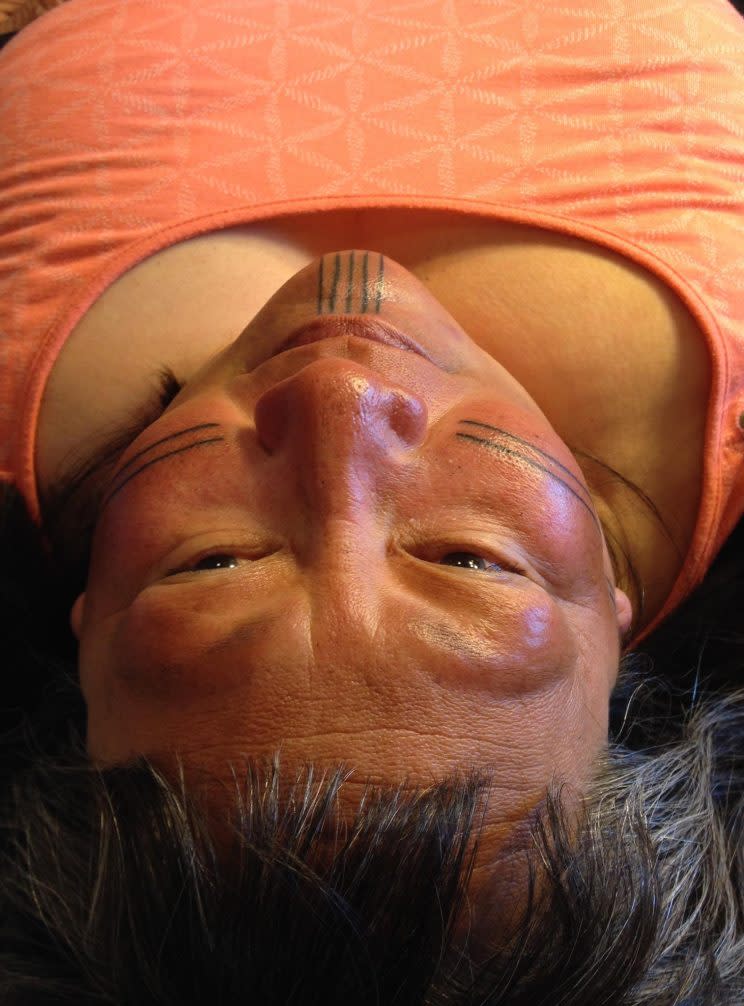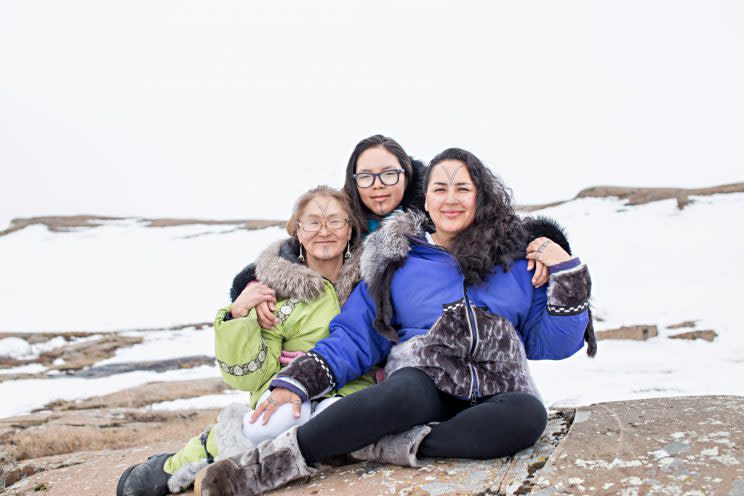PHOTOS: For Inuit women, face tattoos come out from the past and ink to the present
It was nine years ago that Hovak Johnston got her first Inuit tattoo and it stuck with her, far beyond skin-deep.
"It was such a powerful experience," she told Yahoo Canada News.
The inspiration came in 2005, when she says the last known Inuk woman with tattoos in Nunavut died.
“It hit me like a punch in the stomach that this could be another part of our culture that would be lost forever,” she said.
Johnston could not find any Inuit women to do the old tattoos that had been done by their ancestors — it was done traditionally with sinew soaked in black soot mixed with seal oil and stitched into the skin with a bone needle, leaving the ink behind.
"Nobody had picked up the skill, they had only heard how it had been done."
As she shared her concerns with other women in the community she realized there was a demand — something suppressed by decades of residential schooling that abused and oppressed Indigenous people and made them ashamed of their culture.
She looked hard and found some people who taught her the three different methods that she could use in present day: needle-and-thread hand stitch, stick and poke and the modern gun technique. From that, she was able to get funding for the Inuit Tattoo Revitalization Project.
"It has united Inuit women across the country," she said. "It gives them pride, a sense of culture, a sense of connections to identity and traditions."
For older women she says it brings out long-buried stories in them "and tears," while the younger generation is instilled with a desire to learn about their culture.
"[Inuit tattoos are usually] a sign of coming of age, reaching the duties and roles of a woman or [they mark] something significant that happened in that woman's life."
One thing Johnston cautions against is cultural appropriation of Inuit tattoos if non-Indigenous people start to mimic the markings.
"There is no law against non-Inuit people copying our designs and getting traditional tattoos, but I ask you please don't," she said. "Educate yourself on the meanings and history… give us time to be proud again, to find our identity and to offer it back to our people."
Johnston is working to get more Inuit women trained: “We don’t have salons and easy access to tattoo artists… [our people] should have the first opportunity to get their tattoos.”
The Yellowknife resident has a book in the works about the project and has shared some of the photographs from it with Yahoo Canada News.









